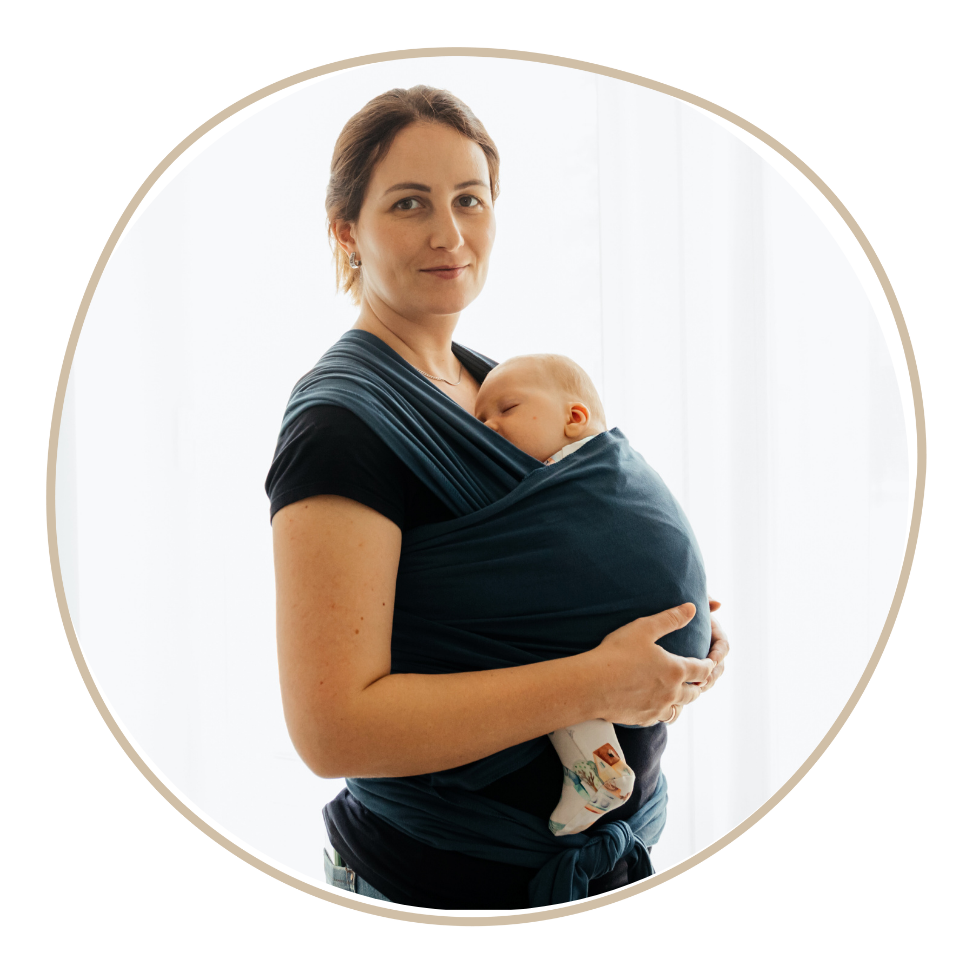
Tina Rapp
Family nurse, mother and baby expert
Table of contents
- Ergonomic carrying: Important tips for healthy baby carrying
- Why is ergonomic carrying so important?
- When and how should I carry my baby in the carrier?
- The right way to wear: ergonomic and comfortable
- What types of baby carriers are available and which one is right for me?
- How do I find the right baby carrier for me?
- Conclusion: Carrying as a daily adventure
Ergonomic wear: important tips for wearing a healthy wearing babies
The Carry a baby has many Advantages, both for the baby and the parents. Especially important is an ergonomic carrying style that physical Promotes the health and well-being of both. But why should you carry your baby ergonomically?
Carrying provides a strong bond, promotes development and ensures security. The correct carrying method helps to protect the baby’s spine and supports it in its motor Development. With the right baby carrier, carrying becomes a pleasant experience for both mother and child.

Why is ergonomic wear so important ?
Ergonomic carrying is not only comfortable but also healthy. It ensures that your Newborn sits in a natural position that promotes physical development while preventing injuries such as hip dysplasia A good baby carrier provides both the baby and the person carrying it with the necessary SupportBut what exactly are the benefits of babywearing for the wearer and the baby?
-
Advantages for the wearer:
• Hands free in everyday life: You can move around, shop, go for walks or do chores without any problems.
• Baby safe on your body: Your baby is always with you and no one can touch it without your permission.
• Flexibility: You can stay flexible on all routes without having to put the baby down. -
Advantages for the baby:
• Promotes bonding and development: Carrying strengthens the emotional bond and promotes trust.
• Calming and relaxing: The baby feels safe and secure.
• Promotes motor development: Carrying supports the baby’s physical development.
• Helps with digestive problems: Carrying can help with colic and other regulation problems.
When and how should I wear my baby in the stretcher ?
There are no fixed rules as to when you can start carrying your baby, but in principle you can start carrying your baby right after birth in the baby carrier Of course, it is important to pay attention to the Well-being Pay attention to the baby's needs and your own. You should carry your baby as long as you both feel comfortable. There's no upper age limit for babywearing, as long as it remains comfortable and enjoyable for both of you.
Carrying positions:
- Front carrier (for newborns): The baby's head and neck should be well supported.
- Supine position (from about 6 months): Your baby should be able to hold his head securely.
- Hip carrier (from approx. 8 months): Especially for shorter distances, as it is less back-friendly.

The right way to wear: ergonomically and convenient
For a healthy posture It is important that your baby sits in the so-called squat position:
- The baby's legs are spread.
- The baby's knees are the highest point, the bottom is the lowest point.
- This attitude prevents Burden the spine and ensures a healthy posture.
The ideal height: “head-kissing height”
- Your baby should sitthat you can kiss your baby's head without bending over too much.
- This is not only comfortable for the baby, but also for your back.
What wearing aids are there and which one is the right one for me ?
There are a variety of Carrierswhich are distinguished in terms of comfort, handling and the carrying position. The choice of the right carrier depends on various Factors It depends on factors such as your baby's age, your comfort level, and how often you use it. Here's an overview of the most common baby carriers:
Intactable content
Elastic sling
- Carrying positions: belly, back, hip
- Special features: Is tied, many different ways of tying and carrying, soft and also suitable for premature babies
- Weight: From birth to 9-15 kg (depending on the manufacturer)
Woven woven
- Carrying positions: belly, back, hip
- Special features: Is tied, more robust than the elastic sling, holds more weight
- Weight: From birth to the end of gestation
Pre -bound sling
- Carrying positions: belly
- Special features: No tying required, carrying position only in front of the stomach
- Weight: From birth to 9-13 kg (depending on the manufacturer)
Mei Tai
- Carrying positions: belly, back, hip
- Special features: Integrated back panel, no plastic buckles, completely made of fabric
- Weight: From birth to the end of gestation
Halfbuckle
- Carrying positions: belly, back, hip
- Special features: waist belt with buckle, shoulder straps for tying
- Weight: From birth to the end of gestation
Fullbuckle
- Carrying positions: belly, back, hip
- Special features: Multiple adjustment options with buckles, similar to a backpack
- Weight: From birth to the end of gestation
Onbuhimo
- Carrying positions: back
- Special features: Back carrier, suitable for "hop on-hop off" tours from crawling age
- Weight: From sitting age until the end of the carrying period
Ring Sling
- Carrying positions: belly, back, hip
- Special features: Short sling, with two rings to close and adjust
- Weight: From birth to the end of gestation
Loop
- Carrying positions: hip (with two loops also belly)
- Special features: Loops to carry the child sideways on the hip or as a front carrier with a cover
- Weight: From birth to the end of gestation
Hip stretcher
- Carrying positions: hip
- Special features: Adjustable carrying, diagonally over the shoulder, for shorter distances
- Weight: From sitting age until the end of the carrying period
Hip seat
- Carrying positions: hip
- Special features: Belly belt with padded seat, ideal for sitting the baby on the hip when it can sit independently
- Weight: From sitting age until the end of the carrying period
Each of these carriers has its own Advantages and disadvantages. The right choice depends on how and how long you want to carry your baby. Pay attention to your own comfort as well as your baby's, and
you should always Manufacturer information regarding weight and age.
How do I find the right wearing aid for myself ?
There is no one-size-fits-all carrier for all parents and babies. Finding the right carrier requires a little Test and try things out. It's similar to choosing the right shoes: Only by trying them out can you ensure that both you and your baby feel comfortable.
Tips for trying out:
-

Try on different carriers: Move with your baby and pay attention to how he or she feels.
-

Pay attention to comfort:
Your back should be relieved and the baby should sit ergonomically.
-

Also test your mobility: Check that you can move freely without the carrier becoming uncomfortable.
These tips do not replace Carrying advice, they only serve the Orientation. A babywearing consultation is a good idea and can save you a lot of money from making mistakes. If you're unsure, ask a babywearing consultant.
Conclusion: wear as a daily adventure
With the right baby carrier, you can spend many wonderful moments together. Carrying not only promotes the bond between you and your baby, but also makes Everyday significantly lighter. If you and your baby decide to carry your baby, you'll both enjoy it for a long time – so hop into the baby carrier and have a great day!







